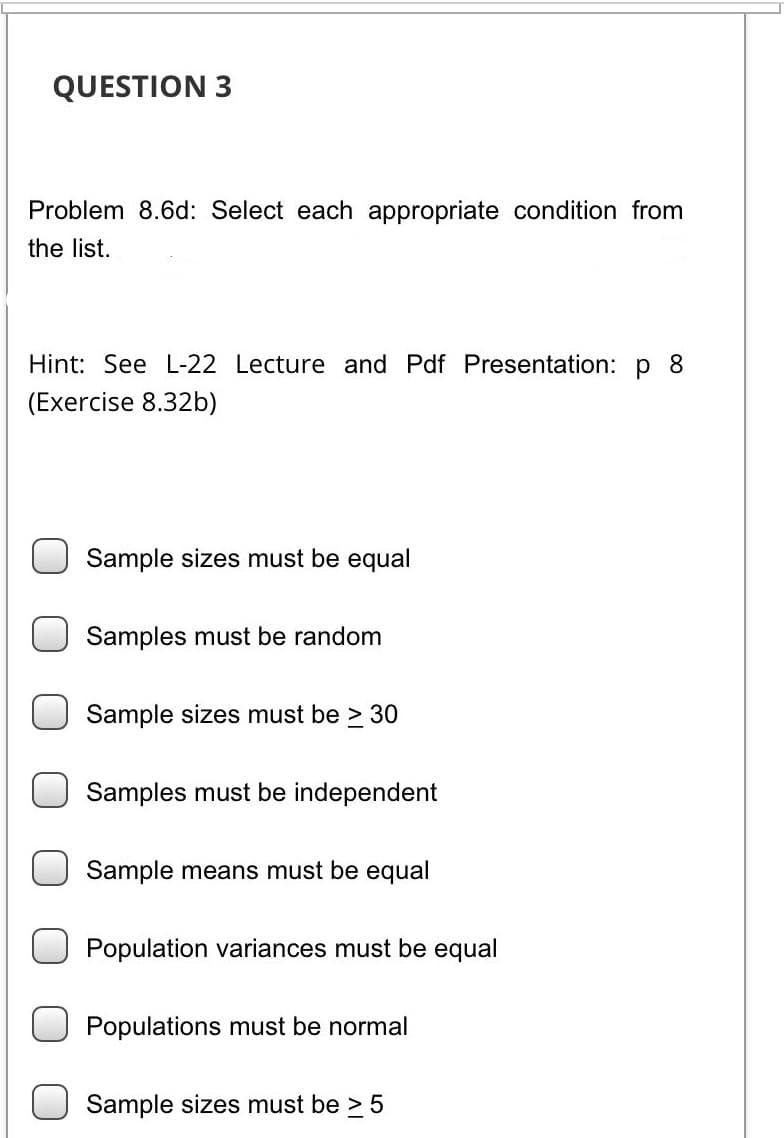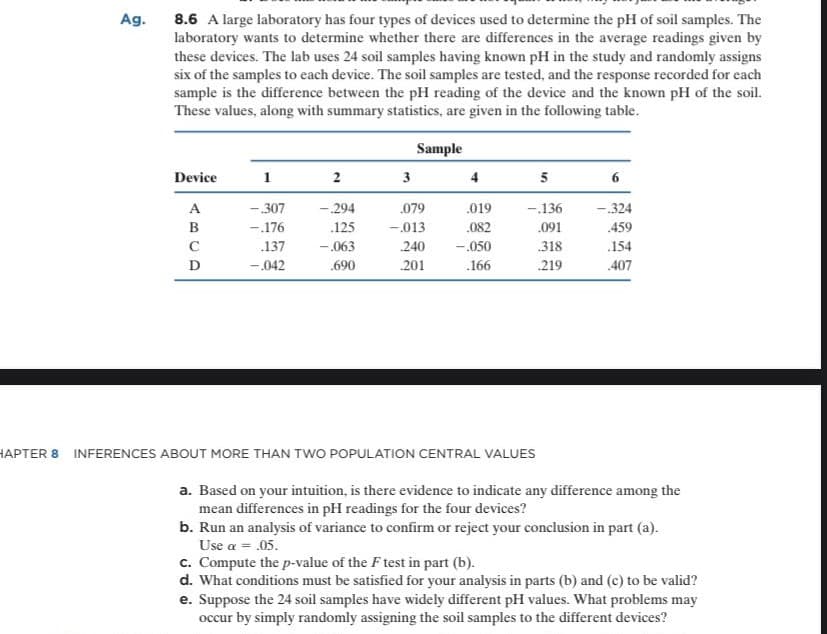Problem 8.6d: Select each appropriate condition from the list. Hint: See L-22 Lecture and Pdf Presentation: p 8 (Exercise 8.32b) Sample sizes must be equal Samples must be random Sample sizes must be > 30 Samples must be independent Sample means must be equal Population variances must be equal Populations must be normal Sample sizes must be > 5
Problem 8.6d: Select each appropriate condition from the list. Hint: See L-22 Lecture and Pdf Presentation: p 8 (Exercise 8.32b) Sample sizes must be equal Samples must be random Sample sizes must be > 30 Samples must be independent Sample means must be equal Population variances must be equal Populations must be normal Sample sizes must be > 5
Functions and Change: A Modeling Approach to College Algebra (MindTap Course List)
6th Edition
ISBN:9781337111348
Author:Bruce Crauder, Benny Evans, Alan Noell
Publisher:Bruce Crauder, Benny Evans, Alan Noell
Chapter5: A Survey Of Other Common Functions
Section5.3: Modeling Data With Power Functions
Problem 6E: Urban Travel Times Population of cities and driving times are related, as shown in the accompanying...
Related questions
Question
i need MCQ solution

Transcribed Image Text:QUESTION 3
Problem 8.6d: Select each appropriate condition from
the list.
Hint: See L-22 Lecture and Pdf Presentation: p 8
(Exercise 8.32b)
Sample sizes must be equal
Samples must be random
Sample sizes must be > 30
Samples must be independent
Sample means must be equal
Population variances must be equal
Populations must be normal
Sample sizes must be > 5

Transcribed Image Text:Ag.
8.6 A large laboratory has four types of devices used to determine the pH of soil samples. The
laboratory wants to determine whether there are differences in the average readings given by
these devices. The lab uses 24 soil samples having known pH in the study and randomly assigns
six of the samples to each device. The soil samples are tested, and the response recorded for each
sample is the difference between the pH reading of the device and the known pH of the soil.
These values, along with summary statistics, are given in the following table.
Sample
Device
1
2
3
4
5
6
A
- 307
- 294
079
.019
-.136
-.324
B
-.176
.125
-.013
.082
.091
459
C
.137
-.063
240
-.050
318
.154
-.042
.690
201
.166
219
407
HAPTER 8 INFERENCES ABOUT MORE THAN TWO POPULATION CENTRAL VALUES
a. Based on your intuition, is there evidence to indicate any difference among the
mean differences in pH readings for the four devices?
b. Run an analysis of variance to confirm or reject your conclusion in part (a).
Use a = .05.
c. Compute the p-value of the F test in part (b).
d. What conditions must be satisfied for your analysis in parts (b) and (c) to be valid?
e. Suppose the 24 soil samples have widely different pH values. What problems may
occur by simply randomly assigning the soil samples to the different devices?
Expert Solution
This question has been solved!
Explore an expertly crafted, step-by-step solution for a thorough understanding of key concepts.
Step by step
Solved in 2 steps with 4 images

Recommended textbooks for you

Functions and Change: A Modeling Approach to Coll…
Algebra
ISBN:
9781337111348
Author:
Bruce Crauder, Benny Evans, Alan Noell
Publisher:
Cengage Learning

Functions and Change: A Modeling Approach to Coll…
Algebra
ISBN:
9781337111348
Author:
Bruce Crauder, Benny Evans, Alan Noell
Publisher:
Cengage Learning